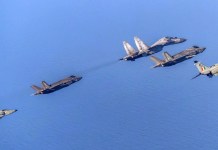The UAE made history on Tuesday by becoming the first Arab nation and the fifth in the world to launch a probe to study Mars.
The successful orbit insertion of the Hope space probe on Tuesday marked the triumph of the small Gulf nation’s interplanetary dreams which it embarked on seven years ago.
Why EIU Called India A ‘Flawed Democracy’ & Termed Rival Pakistan A ‘Hybrid Democracy’?
It is a significant moment for the Arab nation, with the UAE’s ambassador to the US, Yousef Al Otaiba, calling it “the Arab world’s version of President John F Kennedy’s moon shot”.
The UAE authorities hailed the symbolic importance of the mission, saying the success of the probe will inspire a new generation of Emirati and Arab youth to explore space sciences.
More than 200 of the country’s brightest engineering minds worked on the development of Hope — both men and women. It was largely built in the University of Colorado’s Laboratory for Atmospheric and Space Physics (LASP), with significant work also taking place at the Mohammed bin Rashid Space Center in Dubai.
Launched on July 20, 2020, by the H-IIA Launch Vehicle, the Hope probe set for its interplanetary journey from Japan’s Tanegashima Space Centre and has been tasked with providing the “first-ever complete picture of the Martian atmosphere”.
According to its website, three state-of-the-art science instruments have been designed to study the different aspects of the Martian atmosphere, which includes an infrared spectrometer, an exploration imager, and an ultraviolet spectrometer.
The interferometric thermal infrared spectrometer is designed to give a better understanding of the energy balance in the current Martian climate by characterizing the state of the lower Martian atmosphere and the processes that are driving the global circulation.
The exploration imager will study the red planet’s upper and lower atmosphere in visible and ultraviolet bands, and capture high-resolution images of Mars. The instrument has been developed jointly by the Laboratory for Atmospheric and Space Physics (LASP) and Mohammed Bin Rashid Space Centre (MBRSC).
Although the Hope mission had the support and expertise of foreign agencies, the UAE hopes the program will enhance the country’s capabilities in the field. Several equipment pieces for the probe were procured from other nations, but it was put together by around 200 Emirati engineers.
— Hope Mars Mission (@HopeMarsMission) February 10, 2021
Speaking to the BBC after the probe achieved its orbit insertion, LASP engineer Brett Landin said the UAE’s engineers were now in a good place to build spacecraft independently.
“We wanted to arrive at Mars; (I’m) really grateful, and it’s like a weight of seven years has been lifted from my shoulders,” BBC quoted Sarah Al Amiri, UAE minister of state for advanced technology and chair of the UAE Space Agency as saying.
“On arriving at Mars, I’m now truly looking forward to the scientific discoveries. And I truly hope this mission will impact an entire generation to strive to do things that are even bigger,” she told BBC News.
After being captured by Mars’ gravity, the Hope probe is now in an elliptical orbit around the planet, with the closest distance at 1,000 km from the surface going as far as 50,000 km away. The orbit will lessen to the targeted 55-hour time period, achieving a 22,000km-by-43,000km orbit that is inclined to the equator by about 25 degrees.
The UAE has now become the fifth country in history to send a probe to Mars, and only the second after India to be successful at the first attempt itself. Another significant achievement for the mission was that nearly 80 percent of the science team consisted of women, with an average age of only 27 years.
Burj Khalifa, the tallest building in the world, was lit up moments after the probe reached Mars successfully, displaying the faces of the engineers who worked on the mission over the past six years, and celebrations were witnessed across the Gulf nation following the landmark achievement.
Hope will be joined by China’s Tianwen-1 Mars mission, which is due to enter the Martian orbit on Wednesday. Tianwen-1 consists of an orbiter, a lander, and a rover. China will attempt to land its probe on the surface of Mars, becoming only the third nation to do so.




